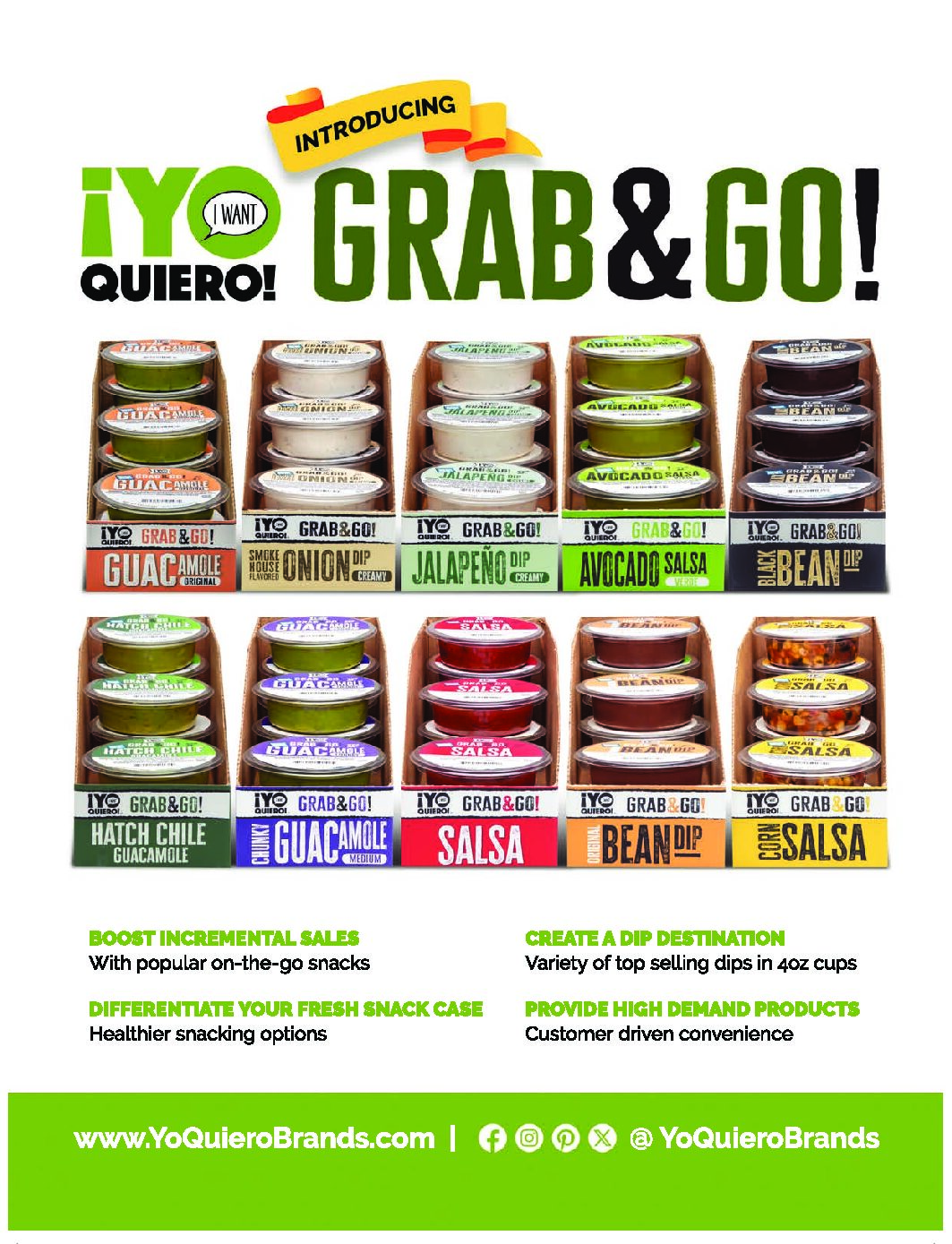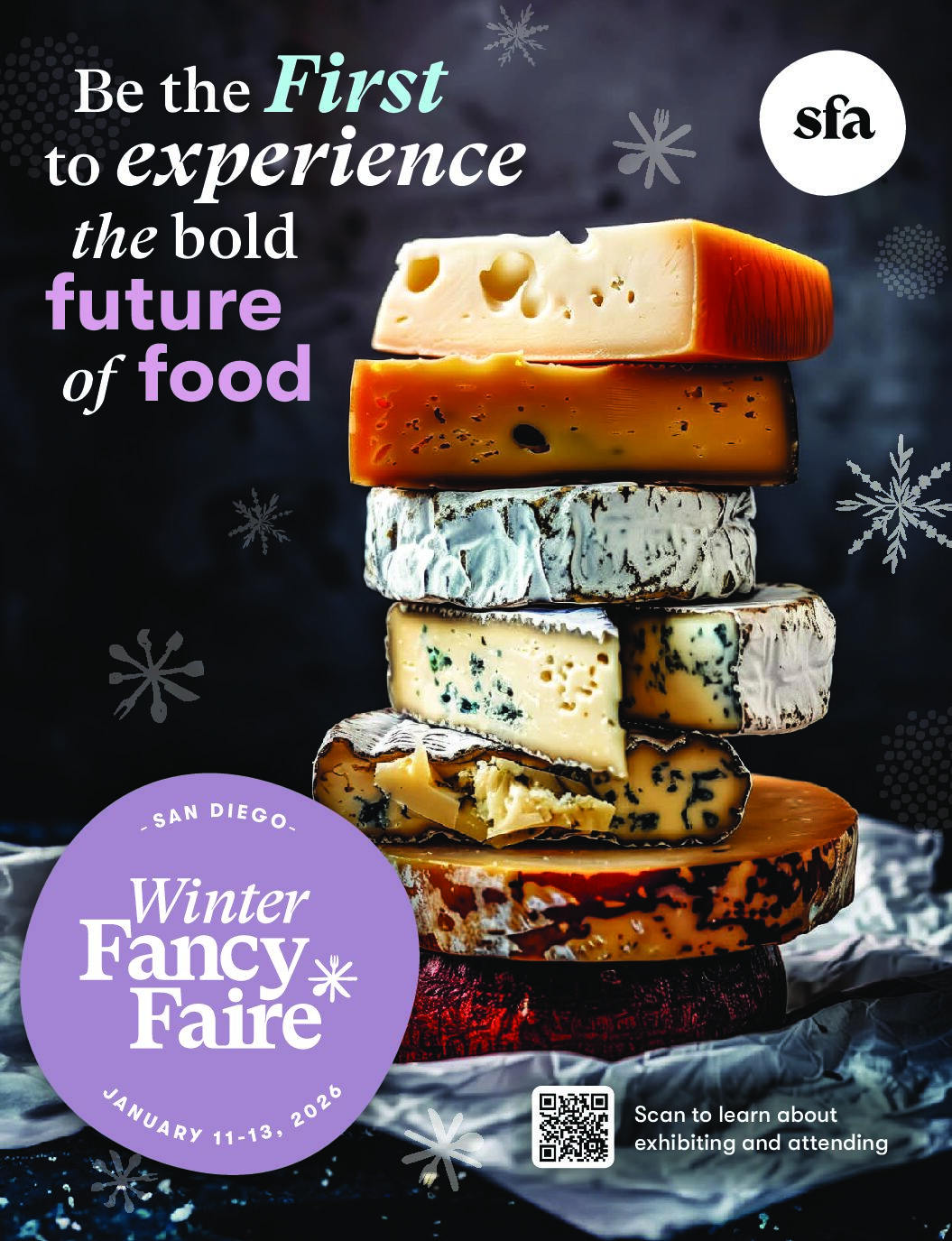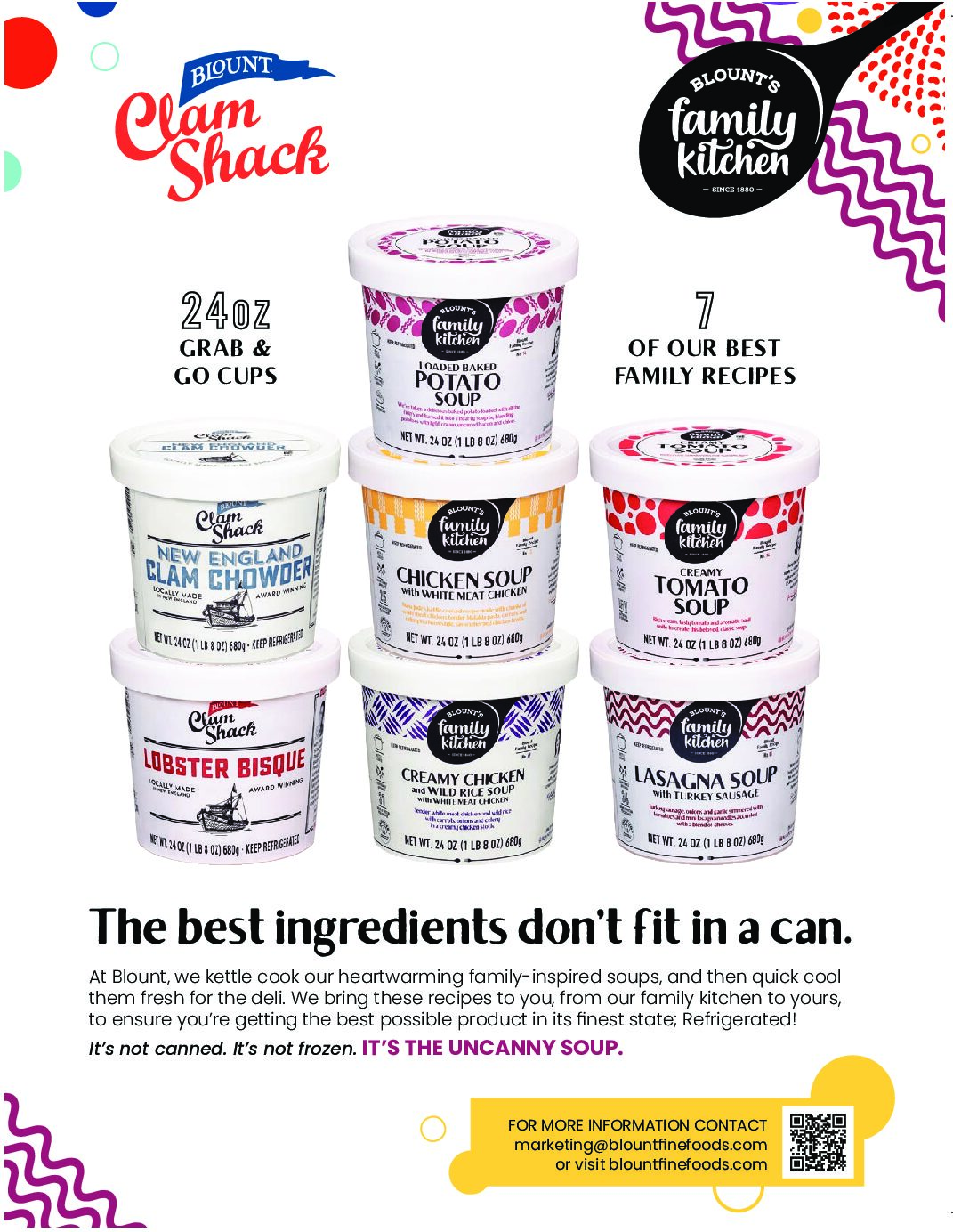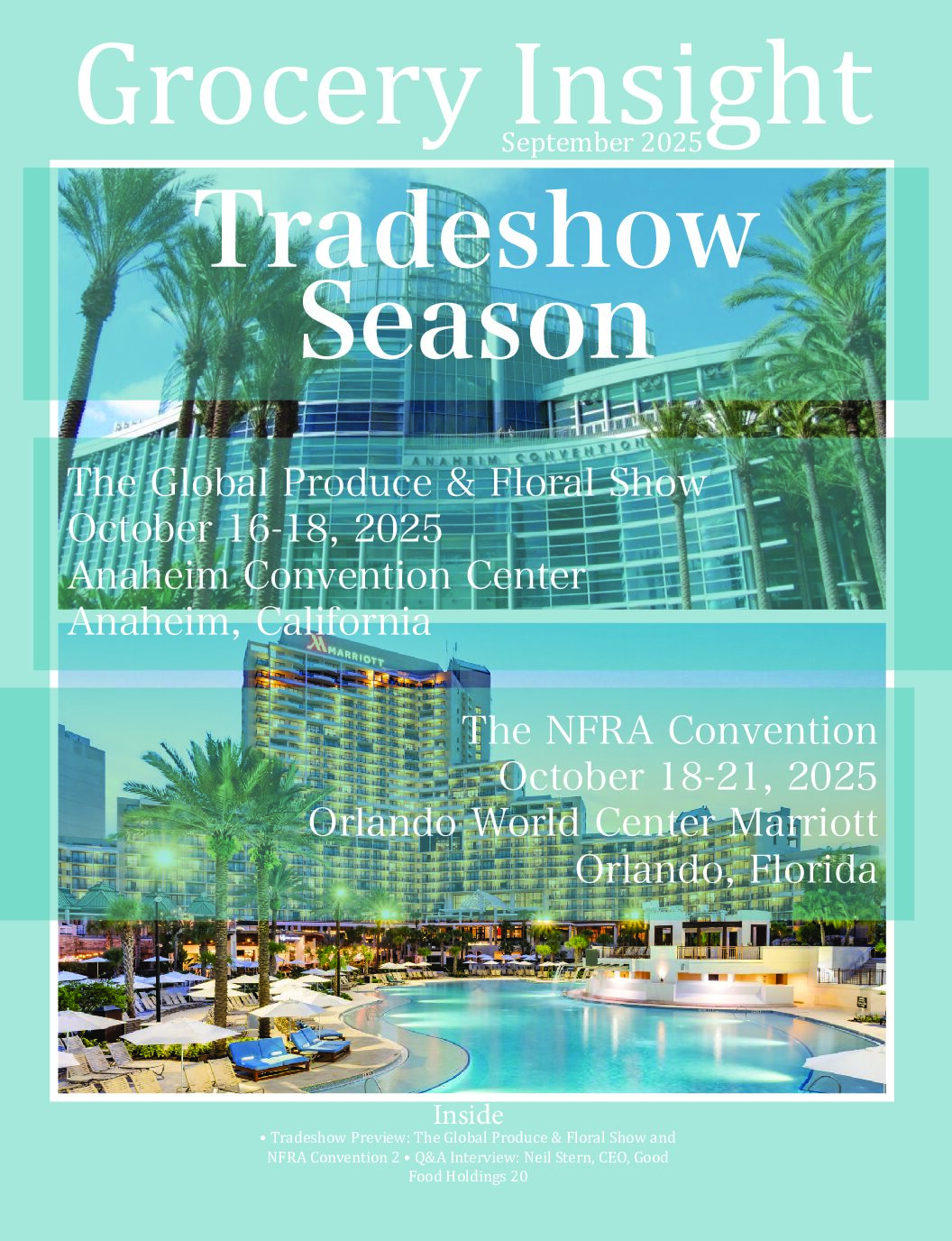Q&A Interview with Neil Stern, CEO, Good Food Holdings
What is the role of the natural and organic channel in supporting the growth and evolution of the grocery industry?
It’s one of the really bright spots in the industry right now. Consumers are looking, particularly the next generation of consumers, they are looking for healthier product, they’re looking for more information about their product, they care about where it comes from, and they care about the ingredients they’re putting into their body, and natural and organic is extremely well positioned to take advantage of it. We’re well positioned to take advantage of it in terms of the formats we operate in the market. I feel really good about where we’ve been and frankly, where we’re heading from the industry standpoint.
What are the top issues natural and organic grocery retailers are facing?
The issues have always been around the consumer’s desire, if you’re asking consumers and consumer research, yes I want to eat healthy, yes I want to put food on the table, but the challenge has always been around pricing. It costs more to raise products without pesticides or without artificial flavors or ingredients and getting consumers to 1) understand the reasons behind it and 2) frankly just being able to afford it. A lot of consumers would like it, but if it comes down to the shelf where the organic product is 50 cents per pound more, that’s hard for a lot of consumers to afford. It’s that education piece of it which is that whole foods and better foods might cost more, but they’re worth it. That is our elemental challenge.
Consumers really do want to eat healthy and put meals on the table. But they need to do it a value, and they don’t have a lot of time, and they don’t have the time to scan every label and see the ingredients. If there are retailers out there that can help them with those shortcuts, that’s really helpful and what we’re trying to do. Consumers want to indulge as well. How do you find a middle ground where they are eating better, but they also want something that tastes great.
What is the role of technology and AI in the natural and organic retail channel and how do you see that role evolving?
There’s the customer-facing piece of technology and one of the examples I like to give is prior to the pandemic, we had no self-service checkouts in our stores. Today, every one of our stores offers self-service checkouts, and it typically is about 40 percent of our transactions that go through there. We were notably very late to the game because we said we’re a high service, high touch retailer and part of the high service, high touch is I want to have an interaction at the register. Covid came along, and for multiple reasons people didn’t want that human interaction. Today, it’s a very divided line between, if you ask customers, 40 percent of them prefer regular checkout and 40 percent prefer self-service checkout, and we want to be able to offer our customers what they’re looking for and not force them one way or another. I don’t want to force you to a self-checkout if you don’t want that. But that’s an example of technology that has come in and say this is now part of what I believe a grocery experience is going to include in the future. At our flagship store in Beverly Hills, there are 13 different places where you can have service interactions with our people in that store. We have a coffee shop, we have a service bakery, we have a floral shop, we have service meat and seafood departments, three different places for food service in the store. That’s great because we think we can provide an elevated level of service and knowledge for you as you go through there, but we also have to recognize you might not have time in your day to have 13 different service center interactions. So if you just want to get in and get out of that store and not deal with that, I have to make that available as well. Technology is going to do that, and we keep probing. I need to make sure I’m giving you whatever you think is high service, and I’m giving you the higher level of service that you want.
What are some of the recent developments unfolding at Bristol Farms, Lazy Acres Natural Market, Metropolitan Market, New Seasons Market and New Leaf Community Markets?
There are so many things that we’re excited about, but it’s really about embracing food. We are going back to its menu development; it’s not just having a rotisserie chicken, it’s about having the best rotisserie chicken and recipe for it. It’s also seasonal sandwiches we’re putting in place. We really over index for holidays. We’re great holiday stores. How can you make Valentine’s Day special? How do you make Mother’s Day special? And of course, really leaning into the big holidays for us which are Thanksgiving and Christmas. We do have customers that may not shop our banners every day, but when food is important to them, when they’re having family over, we want to be that place to shop while leaning into those things where we can be different and differentiated.
As retailers, we are better when we are treating our customers intelligently and being transparent with them about supply chain. The global supply chain we have is miraculous but it’s also—as Covid showed us—it’s fragile. What’s special? We lean into local in all of our markets, 90 percent of our food is US and to the degree that we can make it local, we think it’s better for us, it’s better for the consumer, it’s better for our supply community that we work with, and that’s really what we’re going to emphasize in our stores.
What makes each of Good Food Holdings’ banners different and unique from the other? What are some of the attributes that unify Bristol Farms, Lazy Acres, Metropolitan Market and New Seasons Market ?
What unifies us is the mission to source produce and sell great food. That could be a Metropolitan Market or a Bristol Farms which are going to focus more on premium and gourmet products, while a Lazy Acres and a New Seasons might be more focused on natural and organic. Great food is the centerpiece of what we’re doing. We’re going to be the best in our local markets. What does that mean? It means that the competitors change in those marketplaces. What I like to say is we’re purposefully inefficient. What does that mean? We don’t buy centrally, we buy locally, we don’t operate centrally, we operate locally, we have local marketing, local merchandising, local HR, local people—that costs more money to do it that way. We think the end result is we’re providing a better experience for the customer when they come into our stores that they can feel we truly are local, we truly are of the community as we have proved. The commonalities: we are trying to be the best in our markets.
What do you attribute to Good Food Holdings’ continued success? What are some key values and features of Good Food Holdings that make you a leader in the natural and organic retail supermarket space?
That’s the secret sauce: we have not taken short cuts. We are putting our money where our mouth is in terms of providing that, and that’s everywhere from the way we’re organized as a company and the way we show up when you show up in the store. The customer service is there, the people are there and the stores to do it. We’re not perfect by any means, but that’s what we’re striving to do. What I’ve been focused on while at Good Food Holdings, where can we be more efficient centrally? And we have lots of examples of that. If you go to our website, we’re using a common platform, the engine is common, but the way we’re going to show up right now is very different because of that localization in the market. If you’re looking closely and you put all five of the banners up, you’ll see the template is the same, but what we’re talking about at each of our banners is going to be different because they attract different customers and do different things in the market. It’s about centralized tools and then local execution.
Given the highly competitive nature of retail, what is Good Food Holdings’ strategy to stand out?
That notion, 40 to 50 years ago and how mom had a shopping list for the week, and she went grocery shopping and bought all the things for the week and recipe planned—that’s not our lives anymore. That was wonderful, but that’s not our lives anymore, and I’ve got to adapt to people’s lives that are looking really different than they did 30 years ago, 20 years ago, 10 years ago and even today.
The grocery store is an amazing place to have that stuff happen. If we are just responsive to what consumers’ lives are, then we’re going to be in good shape.
Even as factors outside of your control impact your business, how does Good Food Holdings remain committed to supporting consumers?
Consumers, I’m amazed at how resilient they were during Covid. They’ve been incredibly resilient. They’ve lived with Covid, they’ve lived with super high inflation. They’ve really been adaptive to what we’re doing. I believe they’ll continue to be adaptive in the future. If tariffs come in, in many cases there are alternatives for consumers, and if we can’t, then we have to be transparent as to why things are happening.
What has been a success for Good Food Holdings in the last year?
I’d like to celebrate that we have grown all of our formats organically, we have five banners, and everyone one of them has added new stores into the fleet and every one of them has added successful stores into the fleet. That’s what we’re most proud of: We have formats that can grow in the marketplace. There’s not a lot of certainly, not in the conventional grocery space, there’s not a lot of growth. We’re able to grow. If we can find the right location that has our concentration of consumers in it, we have shown that we can continue to grow, and that’s what we’re most proud of. That growth is exciting for consumers, it’s exciting internally for us. Because it shows opportunity for our people to grow with us. That’s what we’re most proud of what we’re able to do.
What are your top goals, or areas of focus for the remainder of 2025?
Consumers are apprehensive about the future—there is a lot of uncertainty. That said, consumers are continuing to spend. As we look at the remainder of the year, we want to be adaptive and flexible to whatever is going to come our way for consumers and continue leaning into food. When we get excited about food, our consumers are there with us, along for the ride. How do we get people inspired and show up in the right way— that’s our daily challenge.




